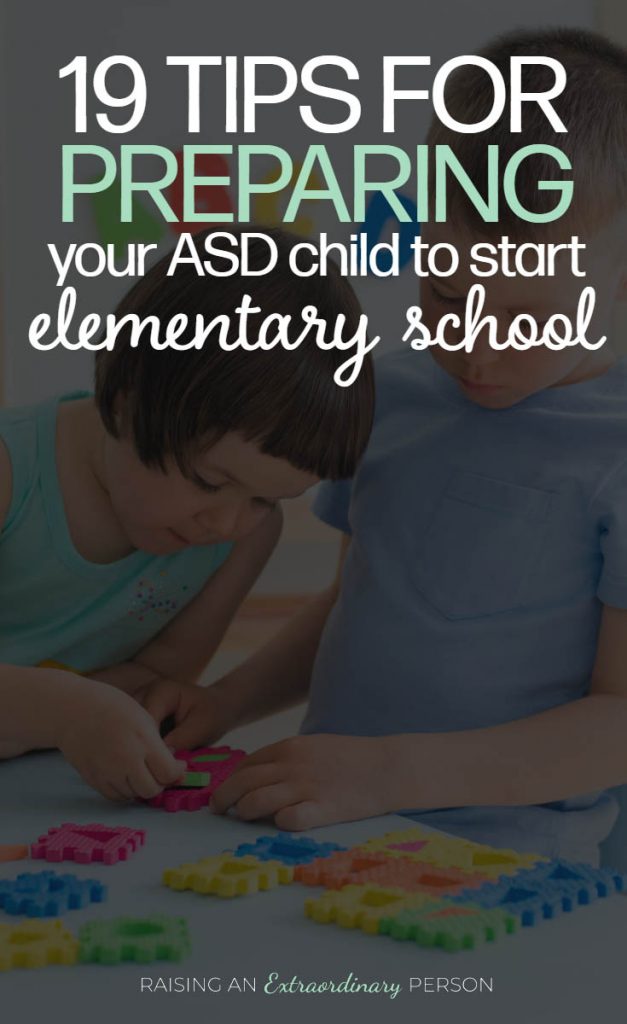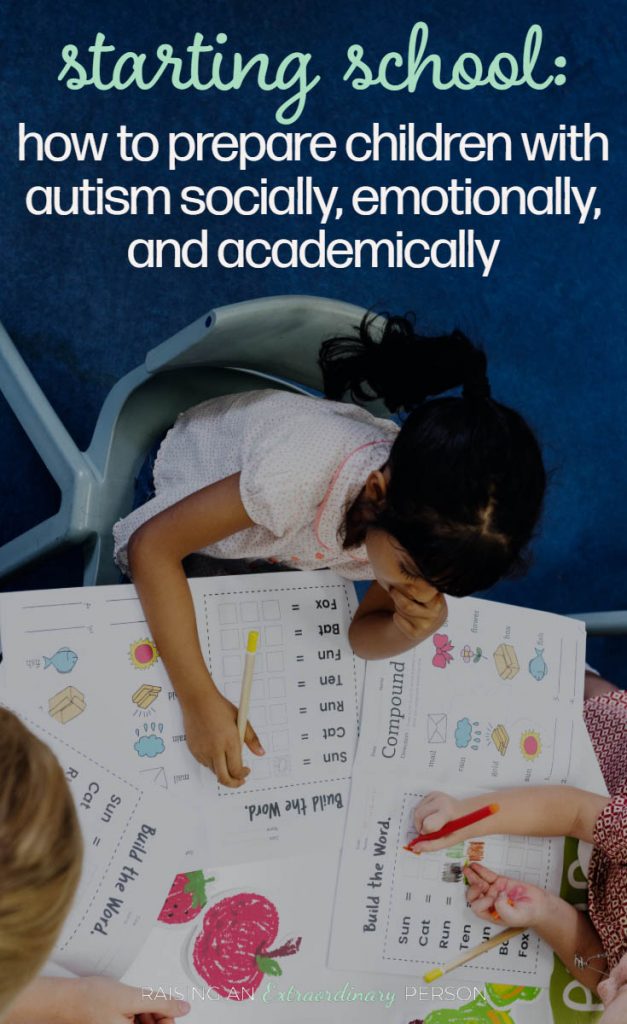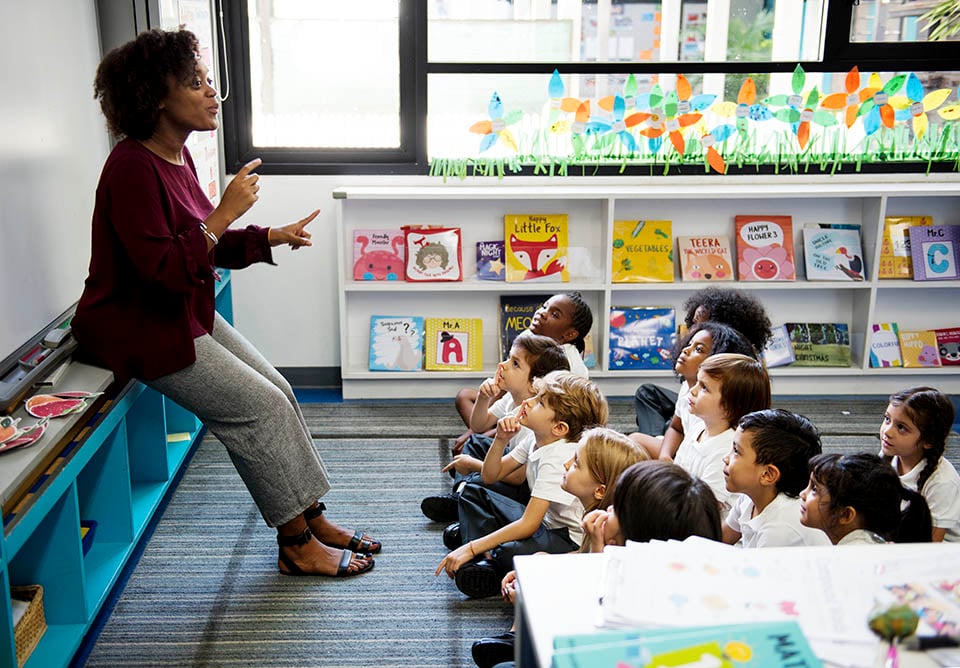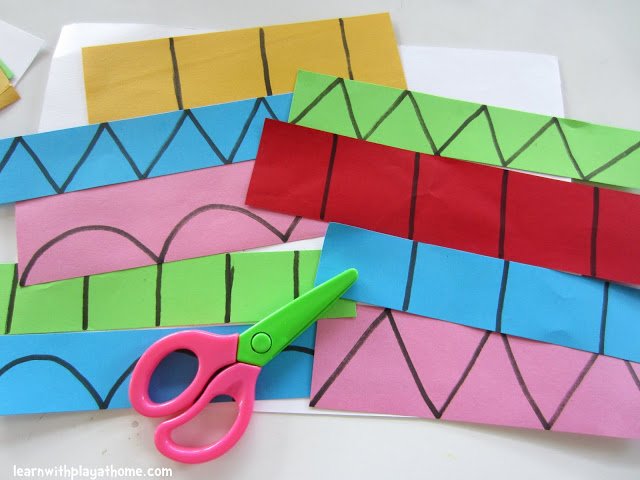19 Simple Ways To Get Your Autistic Child Ready to Start School
The first day of kindergarten is probably, up until this point, the biggest milestone your child has reached.
It’s the first step towards independence and bittersweet for parents. It can feel hard to let them go, but at the same time, you want them to be successful.
How to Prepare Children With ASD for Starting School
If your child has special needs, the thought of them starting school may be terrifying. There are things you can do this summer to get your child ready for kindergarten.
Disclaimer: This post contains affiliate links.
Getting your child ready to start school isn’t only about academics. More importantly, you must prepare them socially and emotionally. This is key to making their first experiences of school positive ones.
Children with autism often struggle with transitions and require strict routines. Their routine is about to change significantly, but there are ways you can get ready over the summer to make this go as smoothly as possible.
Registering for School
When you complete registration for your child to begin school it’s important to include information about your child’s needs on the registration form.
This information is used by staff and teachers to help create the best learning experience for your child. It is your child’s right to receive a public education, and schools are required, by law, to make any accommodations necessary for your child to receive their education in the least restrictive environment possible, preferably in the regular classroom.
You and the school will work as a team to ensure your child’s education is successful.
Related: Tips for Maintaining a Positive Relationship With Your Child’s Special Ed Teacher
You should ask to meet with the teachers who will be involved during your child’s first year of school so you can take some time to discuss any concerns, ask questions, help them get to know your child and learn what your child should expect going into school.
You shouldn’t feel embarrassed about any behavioral issues that your child may have. I promise the school has dealt with it all before and they are there to help you.
If your child is receiving any early intervention services, it will be beneficial if those individuals meet with the school as well to plan your child’s transition and hopefully this is something they have discussed with you already. If not, now is the time to bring it up.
Academics
There aren’t really any academic requirements for starting school, but there are some recommendations.
You should practice these skills over the summer, but if your child can’t do any or all of these skills when they start school – don’t panic.
The teacher will be spending the first couple weeks of the year assessing the class’ strengths and weaknesses and will help develop their skills to grade-level from there.
As a guideline, children in kindergarten should be able to:
Fortunately, children learn best through play, so you don’t have to sit your four-year-old down and have them complete sheet work.
A lot of children’s toys already integrate these early learning concepts into play so playing with toys with your child and engaging with them can help get your child ready for kindergarten.
Counting to 10
One very basic and effective way to help your child learn to count to ten is to begin counting the things around you, all the time.
Ask them “How many crayons do you have?” or “How many books do you see”. Then count them out loud, pointing to each one. Take a pause to see if your child will try on their own or if they’ll repeat what you say.
Educational children’s songs that have a lot of counting and repetition are another great way to help them learn. There are a few great youtube channels out there for kids. Two of our favorites are Little Baby Bum and KidsTV123.
Children’s books with counting are also helpful, not only for learning to count but also for learning to read. They also provide a great opportunity to interact and bond with your child. Look for fun books with rhymes, or bright colors, or lift the flaps.
Know the Alphabet
These concepts can be taught in the same way as counting to ten. Super Why is also a great TV show on Netflix that includes the alphabet and phonics into its storyline.
According to How Wee Learn, you should begin by teaching the letters in their name first. and then teach letters in the following order:
- S, A, T, I, P, N
- C, K, E, H, R
- M, D, G, O
- L, F, B, Q, U
- J, Z, W
- V, Y, X
How Wee Learn also has a lot of great activities to use for teaching letter recognition.
If you’re looking for some easy, no prep worksheets, the blog Fun With Mama has great printables for the entire alphabet. You can work on the letters in your child’s name and then the rest of the alphabet with these fun printables.
As letter recognition starts to develop, point out letters wherever you see them and ask your child if they recognize them. You can do this when you’re reading to your child when you’re shopping and see signs, letters are everywhere around us (and numbers too).
When we pull into a parking lot of a store, or we’re stopped at a red light near a billboard, one of the first things I ask my younger kids is “Do you see any letters up there that you know?”
Write Their Name
If you’re working on the alphabet and letter recognition the way I mentioned above, you should have started working on the letters in your child’s name first. So you can start teaching them to spell and write their name at the same time.
Grab some of these alphabet magnets and place the letters to your child’s name on the fridge. You can start by showing your child how to spell their name with the magnets and repeating each of the letters for them frequently.
Before teaching your child to write their name, they must first be able to maintain basic control of a crayon/marker/pencil so have your child practice making straight and zigzag lines, wavy lines, and circles.
You can start by having them trace dotted lines you make yourself or with a pre-handwriting practice book.
Autistic children may struggle with fine motor planning and skills, so it’s common for them to have messy writing. However, fine motor activities provide lots of practice and will help their skills to develop.
Later you can move on to tracing letters and eventually their entire name.
Cut Along a Line With Safety Scissors
This is another fine motor activity and it takes practice to develop. Get your child a pair of safety scissors that they cannot hurt themselves with, or cut up anything you wouldn’t want them to cut.
The best way to start practicing is with these super simple cutting practice strips that I found on Learning with Play At Home. These strips require almost no prep, and it’s great little activity to keep your preschooler busy and quiet at the table.
We also have this scissors skills book from Melissa and Doug and it keeps my younger children occupied for ever.
I grabbed a package of construction paper and a glue stick at the dollar store so the kids can cut the images from the scissors skills book and then glue them onto the construction paper.
Able to Identify Colors
You can help your child identify colors first by saying the color of objects all the time. “Here are you red socks”, “Here is your blue cup” etc. As your child becomes more familiar with different colors you can start asking them. “What color are your socks?” “What color is your cup”
With these early learning concepts, repetition is key to teaching your child. You can do activities like color sorting games to help your child practice over and over again.
You can also set up workstations at home follow the TEACCH philosophy (frequently used in schools) to help your child understand the concept of working left to right, and being “all done”. Read the guide here.
Preparing for the Transition into School

Starting school is probably going to, temporarily, throw your child’s world upside down. Whatever routine they currently follow is going to change and this adjustment may be difficult (it’s hard on the parents too!)
Preparing your preschooler as much in advance as possible can help them adjust to this transition better.
Related: 8 Tips Guaranteed to Make Transitions Easier
Begin talking about starting school and what to expect early so your child can begin anticipating this day. Only use positive language when you’re talking about school. As you’re preparing your child, you want them to know that it will be a fun, positive experience.
Assure your child, all the time, about how you will be there to pick them up at the end of the day, or that you’re always coming back. This is especially important if they haven’t attended daycare or a regular babysitter and aren’t used to being away from you.
Attend your child’s schools orientation program, or call the school and request a tour prior to their first day to help familiarize your child with the school itself, and the teachers and aides.
If you are allowed, take pictures in the hallways and classroom to show your child over the summer. They will feel more comfortable if the school feels more familiar to them. You can also turn these pictures into a social story.
You can also read your child books about kindergarten to help them know what to expect.
Preparing Your Child Socially
I think the scariest part of getting your child ready to start school is preparing them socially. Children with autism struggle with social skills, and often language and speech as well.
This can create a social barrier that makes it more difficult to form friendships and to express their wants and needs to their teachers or aides.
Children learn best through play and directed play with your child can teach them the social skills they need for kindergarten, and also help them prepare for the transition to school.
Related: The Developmental Milestones of Play
So the best way to teach these skills to your preschooler is to play pretend school!
You should take turns pretending to be the teacher and the student while you play to help your child understand the role of the teacher. If your child has siblings you can include them as students as well.
You can use this playschool set from Melissa & Doug to make the play feel more realistic and practice some of the important aspects of attending school to help your child get ready for kindergarten, such as:
These are all things that happen frequently in school that your child may not have experienced before and may forget. This could cause anxiety, or your child could be so focused on planning what they will say that they can’t concentrate on learning.
Practicing these skills through play will help them become more comfortable for your kiddo and lead to their success!
Prepare Your Child for Lunch
Lunchtime at school is very different than lunchtime at home or at a daycare.
Practice eating school lunch with your child before they start school. This is something a lot of children struggle with.
I’ve cleaned my fair share of smelly warm yogurt out of the bottom of backpacks in my day because I hadn’t taught my kids how to pack up properly. This is a lesson you don’t want to learn the hard way.
Bonus: All About Me Printable
Download and print this “All About Me” printable and fill it out for your child’s teacher. This will help their teacher get to know your child ahead of time so they can better meet your child’s needs.



